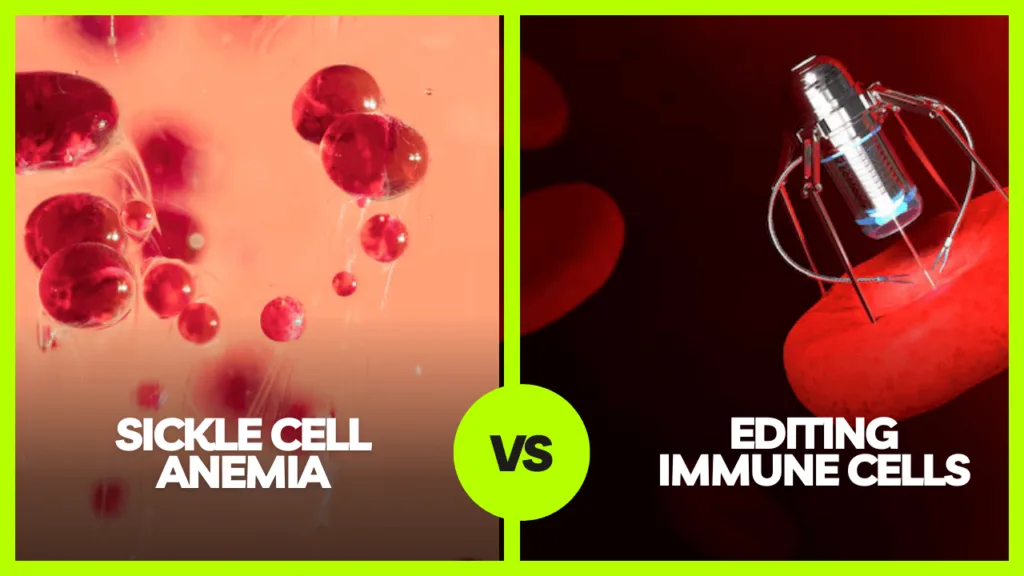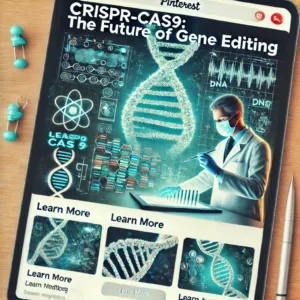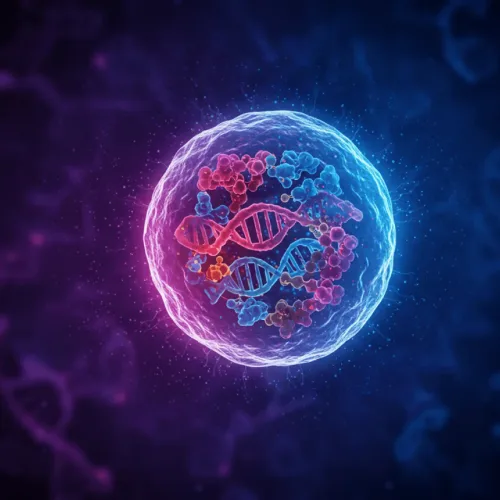CRISPR-Cas9 technology is a gene editing tool that allows researchers to interact with DNA in a new way. It enables precise modification of genetic material, like a scalpel. This breakthrough is already affecting healthcare, agriculture, and scientific research.
CRISPR-Cas9 works like sharp scissors, guided by RNA to cut the target DNA sequence. Scientists can then delete or change the gene. This process is highly precise and encoded. Unlike older methods, CRISPR is faster and cheaper. It has gained wide usage in laboratories worldwide.
What is CRISPR-Cas9?

In recent years, CRISPR-Cas9 has become one of the revolutionary gene-regulating technologies with incredible powers of manipulating DNA in a most precise manner. However, what does all of this really mean?
CRISPR is a type of bacterial immune response that is naturally ingrained. When a virus attacks bacteria, they first keep a small piece or scrap of the attacked DNA in their CRISPR sequence. Later, they retrieve this information to recognize such attacks again and defend against them. Scientists harness this very natural mechanism, using a specific Cas9 protein to cut DNA at the desired location, to insert, delete, or alter targeted genes in any organism’s genome.
There is no denying that CRISPR and gene-editing methods are definitely more effective, faster, and cheaper than conventional means of gene editing. It is already a game changer for biotechnology.
How CRISPR is Revolutionizing Medicine
CRISPR-Cas9 brings significant prospects for changes to modern medical practices. The technology offers its most promising applications for treating genetic disorders, cancer, and viral infections.
Fighting Genetic Disorders
CRISPR-Cas9 has been changing the story of genetic disorders since; clinical research trials in 2025 for sickle cell anemia and cystic fibrosis were demonstrating tremendous success. A Vertex Pharmaceuticals company trial in 2024 corrected the sickle cell anemia-causing faulty gene using CRISPR, with 90% of patients symptom-free one year later. Meanwhile, cystic fibrosis therapies based on CRISPR are targeting the CFTR gene in early trials to restore lung function. These successes affirm CRISPR’s promise to deliver one-time, curative treatments to once untreatable conditions.
Real-World Example:
- Sickle Cell Anemia: Scientists can use CRISPR to edit a patient’s diseased blood stem cells, converting them into healthy red blood cells. These oxygen-carrying cells have shown potential for success in clinical trials.

Cancer Research and Beyond
CRISPR-Cas9 is revolutionizing cancer therapy. Non-genetic disease editing with CRISPR has led to better targeted CAR-T cell therapies. An experiment conducted in 2025 by Stanford University reported that by utilizing CRISPR-edited T cells over a control group, survival rates improved by 30% in leukemia patients. Moreover, CRISPR is facilitating drug discovery by creating accurate disease models and expediting personalized medicine. With predictive models suggesting the best gene targets as CRISPR-Cas9 dovetails with AI, development timelines are being significantly reduced.
Agricultural Breakthroughs with CRISPR
CRISPR’s possibilities do not just pertain to human health, but also to changing agriculture. The ability of technology allows scientists to breed crops that are more resilient, nutritious, and sustainable.

1. Enhancing Crop Resilience
Indeed, climate change is creating havoc in extreme weather events, and CRISPR is one exciting method of improving plants’ resistance to such circumstances. So far, a drought-resistant wheat variety, pest-tolerant rice, and tomatoes with enhanced nutritional quality have been developed using CRISPR. This could prove very important to food security in the generations to come.
Real-World Example:
Drought-Resistant Crops: With the help of CRISPR, the genes in crops, from wheat to rice, have been modified, thus developing their resistance to drought or drought-like conditions. This becomes really important in the drought areas.
Reducing Environmental Impact
Crispr-Cas9 would reduce environmental impacts associated with agriculture, although genetically modified organisms will require less fertilizer and pesticides, thus reducing runoff of waterborne chemicals. The 2025 USDA report indicates CRISPR maize corn projects a 15% reduction of pesticides throughout the Midwest region. Researchers have generated nitrogen-fixing plants through CRISPR efforts that help decrease fertilizer requirements. All these advances were made within the making of global sustainability objectives, making CRISPR a contender for environmentally friendly farming.
Ethical and Societal Implications
Being a breakthrough in any technology, CRISPR-Cas9 has raised many ethical and societal issues. Germline editing is one of the greatest concerns. Notably, it involves the editing of an embryo’s DNA, which, by means of germline inheritance, can be passed along to future generations.
Germline Editing and Designer Babies
The promise of genetic disorder elimination before a baby is born is great. Still, it also raises the possibility of “designer babies.” Should parents be allowed to choose their child’s eye color, intelligence, and other traits? This raises concerns about creating a genetically unequal world.
Quote from Bioethicist:
While CRISPR has the potential to eradicate certain genetic diseases, we must tread carefully to avoid using this technology for nonmedical enhancements that could deepen societal divisions.
Regulatory Challenges and Global Consensus
Another challenge is the lack of a global consensus on the regulation of CRISPR. The diversity in gene editing laws and ethical standards across regions complicates research and international cooperation. Those concerned with the responsible use of CRISPR must engage in international dialogue, regulation, and monitoring.
Future of CRISPR-Cas9
Scientists are making constant progress in improving the accuracy of CRISPR, which makes the future of this technology bright. As it continues to develop, there will be fewer unintentional mistakes, and it will become more effective in treatment. In the next ten years, CRISPR has the potential to be the solution for previously untreatable diseases. It will also have significant applications in agriculture and other fields. CRISPR is a significant change that will revolutionize biology and our behavior.
Conclusion
The scientific invention of the CRISPR-Cas9 now becomes a force stretching into what one can term future sustainable health and development. By 2025, there will be no denying that CRISPR-Cas9 technologies will forever transform the field of genetic medicine and agriculture development. The ethical and societal aspects of this matter demand careful scrutiny. The advancement of CRISPR-Cas9 gene editing needs careful assessment of proper use and equal accessibility. Read and comment on the important ramifications of CRISPR intervention. Food for discussion exists in the space below the article.
FAQs
1. How does CRISPR-Cas9 work?
CRISPR-Cas9 uses a guide RNA to direct the Cas9 enzyme to a specific location in DNA. The Cas9 enzyme then cuts the DNA at that precise location, allowing scientists to add, delete, or change genetic material. CRISPR technology is frequently compared to molecular scissors for its precision in editing.
2. What diseases can CRISPR help treat?
CRISPR can be used to treat a range of conditions, including:
- Cancers like leukemia and multiple myeloma
- Genetic disorders such as cystic fibrosis and sickle cell disease
- High cholesterol
3. Is CRISPR safe?
CRISPR has shown promising results in gene editing, but it is not completely free of risks. Some studies suggest it may cause unintended DNA changes. Although initial trials in humans have been safe, more research is needed to fully understand its long-term effects.
4. Can CRISPR be used in humans?
It is possible to apply CRISPR in humans. It has been approved to treat certain genetic disorders, such as sickle cell disease and beta thalassemia. However, its use is still being studied for safety and ethical considerations.




